Our voyage through China (Page 3)
Our voyage through China (Page 3) McGill University
User Tools (skip):
Our voyage through China (Page 3)
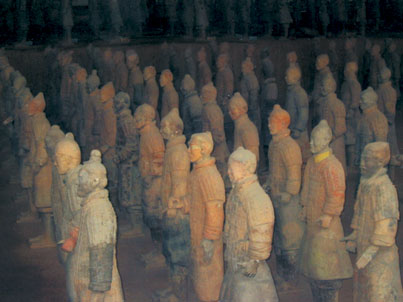
The terra cotta figures at Xian represent the world's biggest 3D puzzle as each had to be restored from their component pieces -- the patrimony of the destruction unleashed by a peasant uprising after the death of the First Emperor, who ruled from 221-210 BC. "You are not supposed to take pictures, but go ahead anyway. The guide is old∑and he's blind," said our local guide, who introduced himself with an infectious chuckle as Soo. "You know, a boy named Soo!"
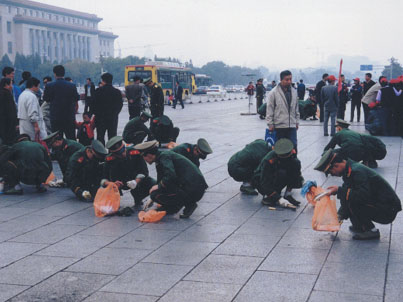
The vastness of Tiananmen Square denies scale to the surrounding buildings and swallows teeming crowds. Instant gaiety for political purposes was provided by 10,000 fading potted flowers left over from the October 1st National Day, while countless cadres of crouching soldier "volunteers" scraped 600,000 wads of gum (deposited by National Day celebrants) off the pavement in preparation for the impending People's Party Congress.

A colourful restaurant in Hong Kong harbour. So much land has been reclaimed and built upon that our Hong Kong guide observed wistfully, "The original harbour now looks more like a river."
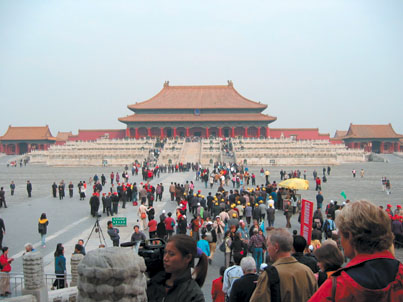
Under a huge, flattering portrait of Chairman Mao (the new Emperor), we passed into the compound of 24 former Ming and Ching dynasty emperors. Occupying 720,000 square metres (860,000 square yards), the compound consists of three Imperial palaces and the Forbidden City, at one time accessible only to the highest-ranking members of the court. Despite having more than 9,000 rooms, the architectural integrity and detail were awe-inspiring. The final imperial act was the wedding celebration in 1922 of the already deposed teenage emperor, Pu Yi. The epic movie, "The Last Emperor," was shot here.
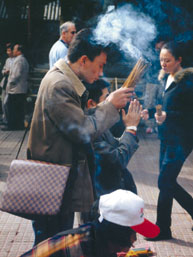
We were surprised by the amount of religious observation in a country that does not formally recognize religion, and outlawed it for many decades.
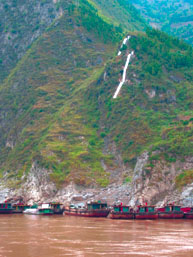
Only a small portion of the river was known to the Chinese as the Yangtze, a name mistakenly applied by Westerners to the entire "Long River." Water-borne traffic is diverse. The water is opaque brown -- silt or pollution? -- and moves at an incredible speed. The hillsides are draped with monstrous white measuring tapes indicating future water levels.
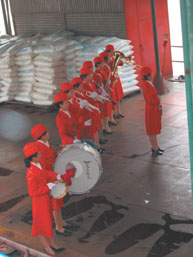
Aboard our cruise ship, the Princess Elaine, our morning wake-up call was the "Butterfly Lovers," a hauntingly beautiful Chinese symphony. Our crew was multi-talented: our waitress was also a manicurist, acrobat, dancer and tuba player, who joined the all-female brass band that piped us off the ship in a musical farewell not to be forgotten.
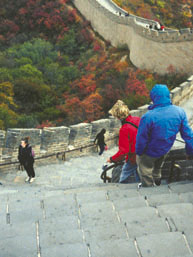
We carefully descend a portion of the Great Wall. Construction began 22 centuries ago and the wall (actually a series of walls) now stretches 7,200 km (4,500 miles) from the mountains of Korea to the Gobi Desert.
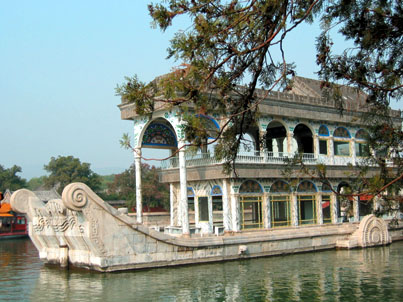
The Marble Boat sits in shallow water in man-made Kunming Lake at Beijing's Summer Palace. This seasonal home, built in 1750 as a vacation retreat for emperors, is known locally as the Peaceful Garden. Much of the original structure was destroyed by European troops in 1860. Dowager Empress Cixi later used money intended to develop the Chinese navy to restore and extend the property, and she is often blamed for the crushing naval defeat of China by the Japanese in 1894.
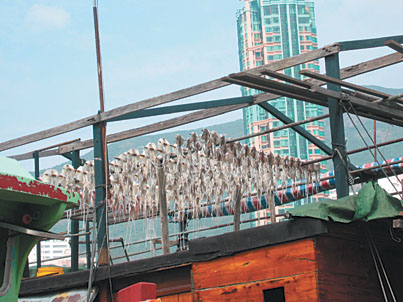
A day's catch of squid dries in the sun on a houseboat in Aberdeen Harbour in Hong Kong.


